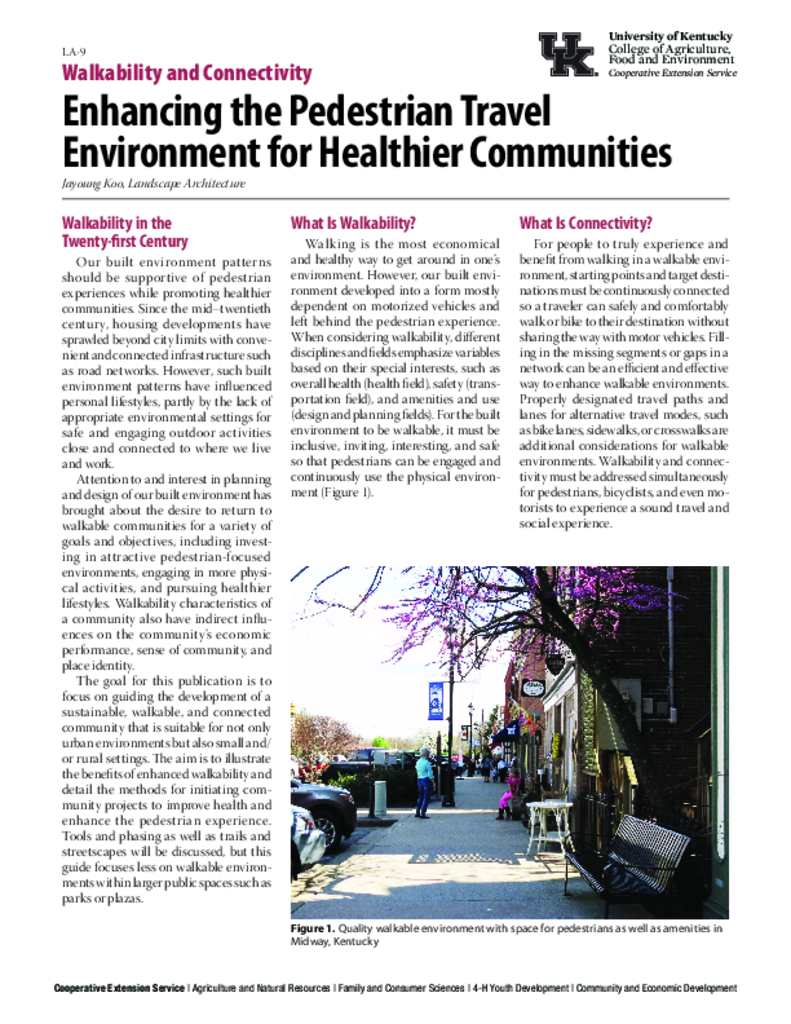Walkability and Connectivity: Enhancing the Pedestrian Travel Environment for Healthier Communities
Walkability and Connectivity: Enhancing the Pedestrian Travel Environment for Healthier Communities
Abstract
Our built environment patterns can be more supportive of pedestrian experiences rather than that of vehicle travel. Since the mid-20th century, housing developments have sprawled beyond city limits with convenient and connected infrastructure such as road networks. However, such built environment patterns have influenced personal lifestyles. Partly, this results from the lack of appropriate environmental settings for safe and engaging outdoor activities within close distances to and connections to where we live and work. Attention and interest in planning and design of our built environment has brought about the need to return to walkable communities for a variety of goals and objectives, including investing in attractive pedestrian focused environments, engaging in more physical activities and pursuing healthy lifestyles. In addition to the physical health of communities, walkability characteristics of communities also have indirect influences on a community's economic performance, sense of community and place identity.
Core Details
Publication Date
November 20, 2017
Categorical Details
© 2025 University of Kentucky, Martin-Gatton College of Agriculture, Food and Environment

